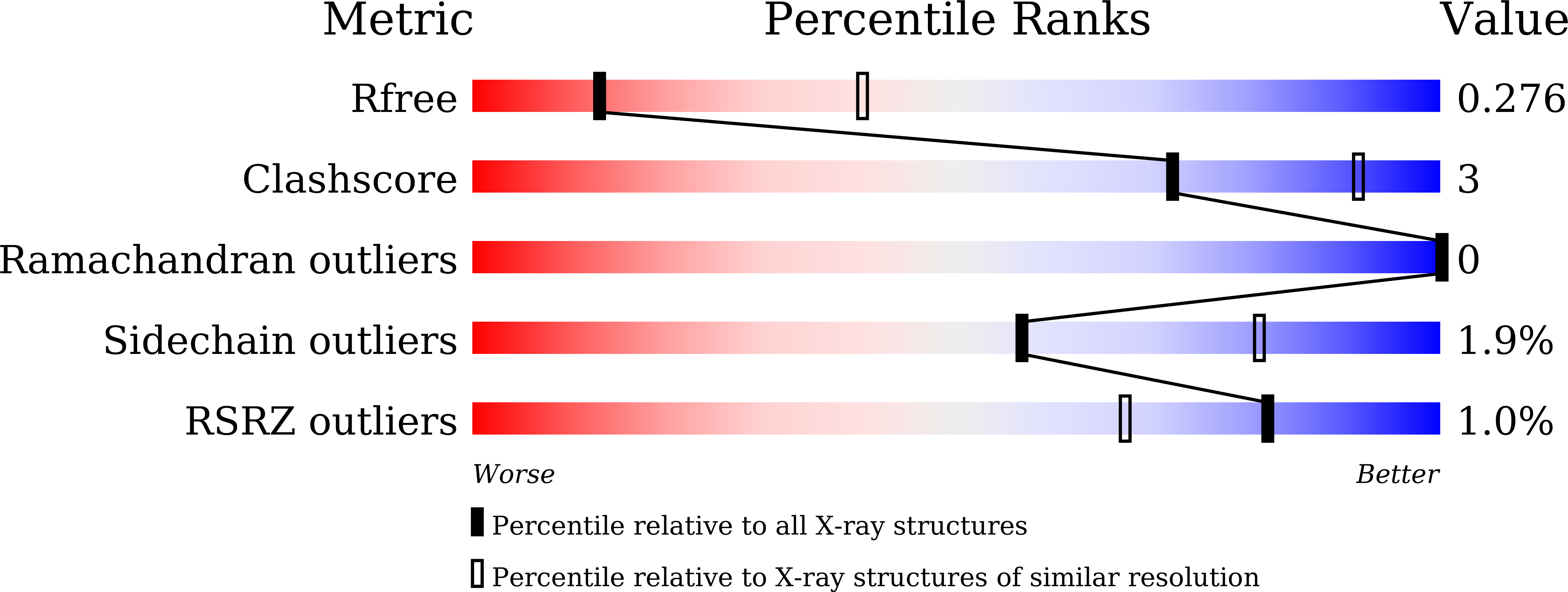Constrained catecholamines gain beta 2 AR selectivity through allosteric effects on pocket dynamics.
Xu, X., Shonberg, J., Kaindl, J., Clark, M.J., Stossel, A., Maul, L., Mayer, D., Hubner, H., Hirata, K., Venkatakrishnan, A.J., Dror, R.O., Kobilka, B.K., Sunahara, R.K., Liu, X., Gmeiner, P.(2023) Nat Commun 14: 2138-2138
- PubMed: 37059717
- DOI: https://doi.org/10.1038/s41467-023-37808-y
- Primary Citation of Related Structures:
7XK9, 7XKA - PubMed Abstract:
G protein-coupled receptors (GPCRs) within the same subfamily often share high homology in their orthosteric pocket and therefore pose challenges to drug development. The amino acids that form the orthosteric binding pocket for epinephrine and norepinephrine in the β 1 and β 2 adrenergic receptors (β 1 AR and β 2 AR) are identical. Here, to examine the effect of conformational restriction on ligand binding kinetics, we synthesized a constrained form of epinephrine. Surprisingly, the constrained epinephrine exhibits over 100-fold selectivity for the β 2 AR over the β 1 AR. We provide evidence that the selectivity may be due to reduced ligand flexibility that enhances the association rate for the β 2 AR, as well as a less stable binding pocket for constrained epinephrine in the β 1 AR. The differences in the amino acid sequence of the extracellular vestibule of the β 1 AR allosterically alter the shape and stability of the binding pocket, resulting in a marked difference in affinity compared to the β 2 AR. These studies suggest that for receptors containing identical binding pocket residues, the binding selectivity may be influenced in an allosteric manner by surrounding residues, like those of the extracellular loops (ECLs) that form the vestibule. Exploiting these allosteric influences may facilitate the development of more subtype-selective ligands for GPCRs.
Organizational Affiliation:
State Key laboratory of Membrane Biology, Tsinghua-Peking Center for Life Sciences, School of Pharmaceutical Sciences, Tsinghua University, Beijing, 100084, China.

















